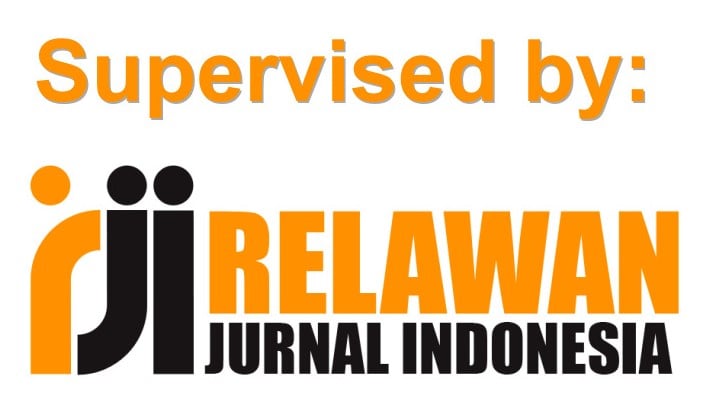STUDI KOMPARATIF PEMIKIRAN H. HUSIN QADERI DAN H. M. ZURKANI JAHJA TENTANG KONSEP AL ASMÂ AL-HUSNÂ YANG MENUNJUKKAN PERBUATAN ALLAH
DOI:
https://doi.org/10.18592/jsi.v2i2.1098Keywords:
al-Asma al-Husna, bencana alam, moral, implikasi spiritualAbstract
This paper compared the tought of al-Asma al-Husna by H. Husin Qader and H.M. Zurkani Jahja. There are differences in the tought of the two figures in the delivery of the words of al-Asma al-Husna written in their work. H. Husin Qaderi in his book ‘Senjata Mukmin’ (the Faithful’s weapon) and H.M. Zurkani Jahja in his book ‘99 jalan menuju Tuhan’ (99 ways of finding the God). The findings of this study is H. Husin Qaderi thought about al-Asma al-Husna that shows God’s action is the dominant to the practical prayer with ‘zikir’, it is appropriate approach to Sufism that he had as well as the community needs are preaching at that time. H. M. Zurkani Jahja told about al-Asma al-Husna that shows God’s action is the dominant to the moral and spiritual implications, the Sufism approach that he used in accordance with al-Ghazali in his ‘al-Maqsâd. Zurkani used simple and easy explanation, it is because he wrote al-Asma al-Husna in a tabloid then booked, his expectation was the people to behave like the personality of God limited his ability. There are differences of tought about al-Asma al-Husna showing the actions of God according to both of them, their difference lies in the God’s blessings on His servants. Qaderi more closed, while Zurkani seems more open to God’s faithful servant and vice versa to get God’s blessings.References
Al-Ghazali, (1994). al-Asma al-Husna, Rahasia Nama-Nama Indah Allah, terj. Ilyas Hasan., Bandung: Mizan.
at-Turmudzi, (2001). Âbû ‘Îsâ Muhammad Ibn ‘Îsâ Ibn Sûrah. Sunan at-Turmudzi. Bairut: Dâr al-Fikr.
Daud, Alfani, (1997). Islam dan Masyarakat Banjar; Diskripsi dan Analisa kebudayaan Banjar, Jakarta: PT Rajagrafindo.
Haderani, (1993). Asma’ul Husna Sumber Ajaran Tauhid/Tasawuf, Surabaya: PT. Bina Ilmu.
Jahja, M. Jurkani, (1996). Teologi Al-Ghazali Pendekatan Metodologi, Yogyakarta: Pustaka Pelajar.
____, (2010). 99 Jalan Mengenal Tuhan, Yogyakarta: Pustaka Pesantren.
____, (2002). Asmaul Husna, Banjarmasin: PT. Grafika Wangi Kalimantan.
Mirhan, (2012). H. Muhammad Zaini Abdul Ghani di Martapura Kalimantan Selatan (1942-2005). Banjarmasin: Antasari Perss.
Mujiburrahman, (2005). Konsep Tauhid dengan PendekatanAsmaul Husna (Studi atas Al-Maqsad Al-Ghazali, 2005), Banjarmasin: Institut Agama Islam Negeri Antasari.
Naparin, Husin, (2013). Memahami Al-Asma Al-Husna, Banjarmasin: PT Grafika Wangi Kalimantan.
Nata, Abuddin, (2004). Metodologi Studi Islam. Jakarta: PT. Raja Grafindo Persada.
Naufal, Muhammad,( t.th). Manaqib, t.t., t.p.
Qaderi, Husin, (1991). Senjata Mukmin. Martapura: Amanah.
Rahmadi. (2010). Jaringan Intelektual Ulama Banjar Abad XIX dan XX (Studi tentang Proses, Pola dan Ekspansi Jaringan). Banjarmasin: Antasari Press.
Rahmadi, M Husaini Abbas dan Abdul Wahid, (2011). Dinamika Intelektual Islam di Kalimantan Selatan Studi Geneologi Referensi dan Produk Pemikiran. Banjarmasin: Institut Agama Islam Negeri Antasari.
____, (2012). Islam Banjar Dinamika dan Tipologi Pemikiran Tauhid, Fiqih dan Tasawuf, Banjarmasin: IAIN Antasari Press.
Rahmat,Jalaluddun, Nurcholis Majid, Husein Shahab, dkk, (2000). Kuliyah-Kuliyah Tasawuf, Bandung: Pustaka Hidayah.
Riswanto, Arif Munandar, (2010). Buku Pintar Islam, Bandung: Mizan.
Rozak, Abdul, (2011). Ilmu Kalam. Bandung: CV. Pustaka Setia.
Ruba’i, Hamim, (1993). Meneliti al-Asmâ al-Husnâ dalam Al-Qur’an, Bandung: PT. Al-M’arif.
Santoso, Sukma, (2012). Fenomena Wali Galung Bati-Bati, Banjarmasin: Fakultas Ushuluddin, Jurusan Akidah Filsafat.
Tim Sahabat, (2010). 27 Ulama Berpengaruh Kalimantan Selatan. Kalimantan Selatan: Sahabat.
Downloads
Published
How to Cite
Issue
Section
License
Authors who publish with this journal agree to the following terms:
- Authors retain copyright and grant the journal right of first publication with the work simultaneously licensed under a Creative Commons Attribution License that allows others to share the work with an acknowledgment of the work's authorship and initial publication in this journal.
- Authors can enter into separate, additional contractual arrangements for the non-exclusive distribution of the journal's published version of the work (e.g., post it to an institutional repository or edit it in a book), with an acknowledgment of its initial publication in this journal.
- Authors are permitted and encouraged to post their work online (e.g., in institutional repositories or on their website) before and during the submission process, as it can lead to productive exchanges, as well as earlier and greater citation of published work (See The Effect of Open Access).





















